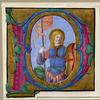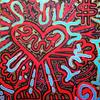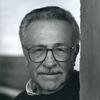The Colonial Williamsburg Foundation Receives Rare Painting from the Subject's Descendants by 18th-Century Virginia Artist
- WILLIAMSBURG, Virginia
- /
- July 02, 2018
In the first half of the 18th century, William Dering was a well-connected dancing master and artist who lived and worked in Williamsburg, Virginia. Today, only six of Dering’s paintings are known to survive; four, including the artist’s only known signed and dated portrait, are in Colonial Williamsburg’s collection, the largest assemblage of his work. Now, through a generous gift from the sitter’s descendants, Joyce Armistead Booth (Mrs. Mordecai Booth), ca. 1745, a large-scale, oil on canvas, joins Dering’s other works at Colonial Williamsburg, including the well-known portrait of the subject’s son, George Booth. Until now, the painting of Mrs. Booth, which is in remarkable condition and survives in its original frame, has descended through the Booth family.
“Rare early works by local artists such as William Dering expand the depth and breadth of our collections and better enable us to share America’s enduring story,” said Mitchell B. Reiss, the Colonial Williamsburg Foundation’s president and CEO. “We are particularly grateful for gifts such as this since they allow us to teach history in a very human and personal way.”
“Executed in saturated, well-preserved reds, blues, and golds, and measuring more than four feet in height, this likeness of Joyce Armistead Booth is visually arresting,” said Ronald L. Hurst, the foundation’s Carlisle H. Humelsine chief curator and vice president for collections, conservation and museums. “The portrait commands the viewer’s attention, and in so doing, provides a window into the goals and aspirations of early Virginia’s planter aristocracy.”
This Dering portrait is significant to ongoing research that Colonial Williamsburg’s experts are undertaking. Laura Barry, Juli Grainger curator of paintings, drawings and sculpture, and Shelley Svoboda, senior conservator of paintings, are at work on a comprehensive study of the artist and his work from both historical and technical perspectives. The portrait of Joyce Armistead Booth, especially due to its pristine condition, informs this research and will help the experts to better understand the nuances in Dering’s other canvases.
“This generous gift gives us an extraordinary opportunity to reunite two family portraits, more fully tell the story of this important Virginia artist and to better understand the context of William Dering’s body of work,” said Ms. Barry. Along with the additional works by this artist in the collection, including the portrait of Elizabeth Buckner Stith (an oil on canvas dating from 1745-1749, the only signed and dated Dering example and for years was the only means by which to measure his work), Ms. Barry and Ms. Svoboda are able to study the individual qualities of each painting as well as to examine them together as a group.
Little is known about William Dering in his early years, but he arrived in Williamsburg from Philadelphia in 1737. He advertised in the Virginia Gazette that same year, the first of several occasions he did so, to announce the opening of a dancing school at the College of William and Mary. By 1744 his success enabled him to purchase two lots and move into the Thomas Everard House on Palace Green. The following year, Dering advertised twice to promote “an assembly at the Capitol…during the Court,” a ball held when the capital city was busy with visiting elected representatives from across the colony. During his time in Williamsburg, Dering also befriended William Byrd II, a Virginia planter and Renaissance man who owned one of the largest art collections in the American colonies. During his many visits to Byrd’s James River estate, Dering painted his daughter Anne Byrd Carter. (Her portrait is also in the Colonial Williamsburg collection.) The artist’s extravagant lifestyle led to debt, however, and he was twice forced to mortgage his property. Ultimately, Dering departed Williamsburg for Charleston, South Carolina, leaving his wife and son behind for a year to handle the public sale of his possessions. Little is known about Dering or his family after 1750.
The portrait of Joyce Armistead Booth is a gift from Julia Miles Brock, Edward Taliaferro Miles and Georginana Serpell Miles in memory of their mother, Alice Taliaferro Miles. It will be included in a future exhibition of the artist’s portraits to be held at the Art Museums of Colonial Williamsburg.
“The painting of Joyce Armistead Booth, my five-times great-grandmother, has been a part of my life for all 74 years, but Miss Joyce (as we were taught to call her) is nearly 300 years old,” said Julia Miles Brock of Virginia. “My brother, sister and I decided it was time she was in a museum with its attendant care, proper storage and an appreciative audience.”
Colonial Williamsburg and Art Museums tickets and additional information are available online at colonialwilliamsburg.com, by calling 855-296-6627 and by following Colonial Williamsburg on Facebook and @colonialwmsburg on Twitter and Instagram. The Art Museums of Colonial Williamsburg remain open during construction of an entirely donor-funded $41.7 million expansion.
About the Art Museums of Colonial Williamsburg
The Art Museums of Colonial Williamsburg include the Abby Aldrich Rockefeller Folk Art Museum and the DeWitt Wallace Decorative Arts Museum. The Abby Aldrich Rockefeller Folk Art Museum, celebrating its 60th anniversary in 2017, is home to the nation’s premier collection of American folk art, with more than 7,000 folk art objects made during the 18th, 19th and 20th centuries. The DeWitt Wallace Decorative Arts Museum exhibits the best in British and American fine and decorative arts from 1670–1840. The Art Museums of Colonial Williamsburg are located at the intersection of Francis and South Henry Streets in Williamsburg, Va., and are entered through the Public Hospital of 1773. Expansion of the museum broke ground on April 27, 2017. Once completed, the museums’ expansion will provide a new entrance, improved public access, increased exhibition space and guest services among other enhancements. Museum hours are 10:00 a.m. to 7:00 p.m. daily.
About The Colonial Williamsburg Foundation
Colonial Williamsburg operates the world’s largest living history museum, preserving Virginia’s 18th-century capital as a fully functioning city. Fun, engaging experiences transport guests back in time and highlight the relevance of America’s founding era to contemporary life. The Colonial Williamsburg experience includes more than 500 restored or reconstructed buildings, historic trade shops, renowned museums of decorative arts and folk art, extensive educational outreach programs for students and teachers, lodging, culinary options from historic taverns to casual or elegant dining, the Golden Horseshoe Golf Club featuring 45 holes designed by Robert Trent Jones Sr. and his son Rees Jones, a full-service spa and fitness center managed by Trilogy Spa, pools, retail stores and gardens. Philanthropic support and revenue from admissions, products and hospitality operations sustain Colonial Williamsburg’s educational programs and preservation initiatives.
# # #
Contact:
Robyn LiverantRobyn Liverant Public Relations
robyn@robynliverant.com





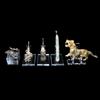
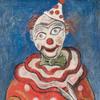


31100x100_c.jpg)

